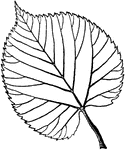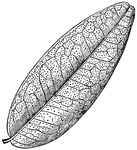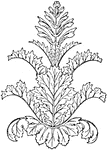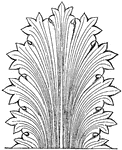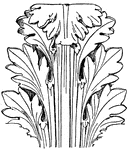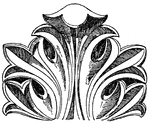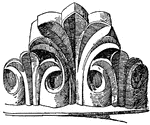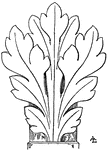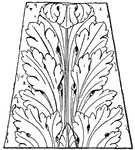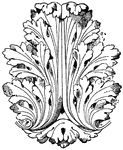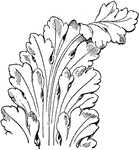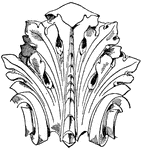Yellow Woolly Bear Caterpillar
An illustration of a yellow woolly bear caterpillar. The Yellow woolly bear caterpillar, Spilosoma virginica,…

White-marked Tussock Caterpillar
Orgyia leucostigma, the White-marked tussock moth, is a moth in the family Lymantriidae. The caterpillar…

Scaled Leaves
A variety of leaves with scales: "a, the scale-like leaves of the stem of Lathraea squamaria (toothwort);…
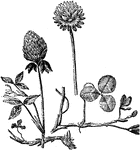
Clover
An illustration of white clover (left) and red clover (right). Clover (Trifolium), or trefoil, is a…
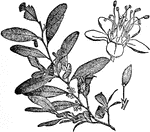
Coca Flower
Coca is a plant in the family Erythroxylaceae, native to north-western South America. The plant plays…
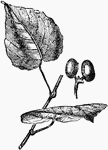
Anamirta cocculus
An illustration of an anamirta cocculus leaf. Anamirta cocculus is an Southeast Asian and Indian climbing…
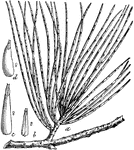
Pine Needle Scale
"a, Scales of Chionaspis pinifoliae upon pine-leaves, natural size; b, scale of male, enlarged; c, straight…

Watercress
Watercresses are fast-growing, aquatic or semi-aquatic, perennial plants native from Europe to central…

Date Palm Leaf
An illustration of a portion of a date palm leaf. The Date Palm (Phoenix dactylifera) is a palm in the…

Earthworm
An illustration of an earthworm. The basic body plan of an earthworm is a tube, the digestive system,…

Crocus
Crocus (plural: crocus, crocuses) is a genus of perennial flowering plants, native to a large area from…

Maryland Figwort
"The inflorescence of Maryland Figwort (Scrophularia Marylandica). a, the flower; b, the fruit; c, a…

Leaf Finial
The finial is an architectural device, typically carved in stone and employed to decoratively emphasize…

Leaf Indentations
An illustration of a fossil of a toothed fern. Ferns are vascular plants differing from the more primitive…

Self-Heal
"Self-heal. (Prunella vulgaris). The upper part of the stem with flowers. a, the calyx; b, the corolla;…
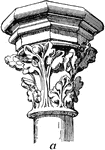
French Gothic Capital
A French Gothic capital from Sainte Chapelle in Paris from the thirteenth century. The capitals were…
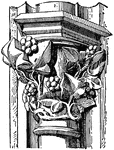
French Gothic Capital
A fourteenth century capital from transept of Notre Dame, Paris. The capitals were tall and slender,…

French Gothic Capital
A fifteenth century capital from the north spire of Chartres. The capitals were tall and slender, concave…

Leaf of Roman Diptych
An illustration of a roman diptych with gold leaf. A diptych is any object with two flat plates attached…
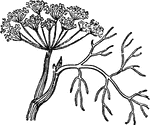
Dill
Dill (Anethum graveolens) is a short-lived perennial herb. It is the sole species of the genus Anethum,…

Sessile Bellwort
The Sessile Bellwort (Uvularia sessilifolia) is a species of bellworts, here showing its sessile leaves.

Grapefruit Leaf
The leaf of the Grapefruit tree (Citrus decumana) in the Rutaceae family of rues or citrus.

Sundew
The Sundews (Drosera rotundifolia) comprise one of the largest genera of carnivorous plants, with over…

Diseased Leaf
"Transverse section of a diseased patch in the leaf showing the hyphae of the fungus pushing between…
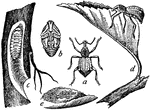
Apple Root Weevil
"Root-weevil (Leptops hopei). a, weevil; b, pupa; c, larva, in situ; d, weevil ovipositing on leaf above;…

Sedum
Sedum is the large stonecrop genus of the Crassulaceae, representing about 400 species of leaf succulents,…

Sagebrush
"Pasture Sage-brush (Artemisia frigida). a, leaf; b, flower-head; c, fertile flower; d, marginal flower."…

Canadian St. John's Wort
"Canadian St.-John's-wort (Hypericum Canadense). a, leaf; b, seed-capsule." -Whitney, 1911
Restored Capital from the Ruins of Persepolis
Other capitals are more compact, where from the lower part, which is in the shape of a globular vessel,…

Capital from the Ruins of Persepolis
Other capitals are more compact, where from the lower part, which is in the shape of a globular vessel,…
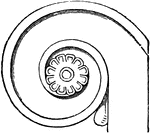
Volute of the Persian Column
Other capitals are more compact, where from the lower part, which is in the shape of a globular vessel,…

Acanthus Leaf, Front and Side Views
The acanthus is one of the most common ornaments used to depict foliage.

Leaf of Akanthos Mollis
The Leaf of Akanthos Spinosus has pointed lobes terminating in spines and narrow leaves.
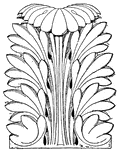
Roman Leaf
The Roman Leaf design is shown as a capital of a column in Pantheon, Rome. The spoon-like roundings…
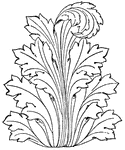
Leaf Displayed
The Leaf Displayed is often used as a design on Roman reliefs, however, it is more richly developed…
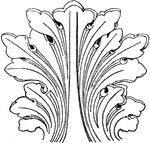
Romanesque Leaf
This Romanesque leaf design was found in a monastery in St. Trophimus (Southern France).

French Leaf Renaissance
The French Renaissance Leaf design tend to look more formal. This design was found in a church in Epernay…
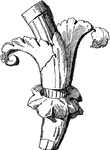
Roman Cup
The Roman Cup is an artificial foliage design that has serrated edges, made to look like natural desgins.


